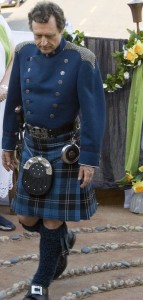In her groundbreaking book The Spiral Dance, feminist writer Starhawk paints a different picture of our early ancestors, “According to our legends . . . more than 35 thousand years ago, when the temperature of Europe began to drop and the great sheets of ice crept slowly south in their last advance. Across the rich tundra, teeming with animal life, small groups of hunters followed the free-running reindeer and the thundering bison. They were armed with only the most primitive of weapons, but some among the clans were gifted, could “call” the herds to a cliffside or a pit, where a few beasts, in willing sacrifice, would let themselves be trapped. These gifted shamans could attune themselves to the spirits of the herds, and in so doing they became aware of the pulsating rhythm that infuses all life . . . They did not phrase this insight intellectually, but in images: the Mother Goddess, the birthgiver, who brings into existence all life; and the Horned God, hunter and hunted, who eternally passes through the gates of death that new life may go on.”[1] These people danced with death every day of their lives, and I doubt they ever took the gift of life for granted. They must have had great reverence for life, nature, and women, who possess the seemingly supernatural power of bringing forth life.
The mother represented the life, death, and renewal cycles reflected in the waxing and waning cycles of the moon. The female body must have seemed like great magic to these people who lived completely dependent on nature. In Whence the Goddesses, Miriam Robbins Dexter, Ph.D., says, “Woman per se was probably believed to have potent, even ‘magical’ powers of fertility, and her birth-giving powers on a personal scale mirrored the feminine principle of birth and regeneration on a cosmic scale.”[2] Still today, we recognize and acknowledge the magnificence of the pregnant female body, though we can now explain it, even reduce it to sterile, medical terms.
In Modern Maturity, Native American activist, author, and actor Russell Means relates a story his grandfather told him: “A long time ago the people were sitting around the fire. Pretty soon the men came to watch the women grow with child and when they watched, they witnessed the miracle of life, birth itself, live birth, the miracle of created life. Then they looked at one another. That’s how my grandfather’s story ended: Then they looked at one another.“[3]
A woman bleeds, without being cut, in harmony with the moon. She holds the egg within her womb, waiting for the instant of creative merging, then grows the new life within. The two bodies live as one, hearts beating in rhythm. The mother breathes and eats for her baby until at last she is called to face the warrior’s ultimate test of courage. Risking death, she willingly stands at the threshold of worlds to bring forth new life. Her moon blood then magically transmutes into milk to feed her newborn. This “miracle of life” that we too often take for granted must have affected our ancestors like nothing else in their world.
In the same article, Means explains that the famous Sun Dance ritual was created to help men come into balance with the female; that the ceremonies were developed to bring understanding to the men and boys of what it’s like to give birth. He goes on to describe the Sun Dance and compares it to the ritual of birth and labor, “We dance the Sun Dance for four days, facing the sun, following the sun, all day, sunup to sundown. During those four days and nights we do not eat or drink water so we can try to begin to understand the suffering of pregnancy. You see, when you eat food it has to go to two people. The body starts relying on itself within.” “Eating itself,” the interviewer says. “Yeah, exactly, for protein. It starts eating the muscles. On the fourth day we pierce our chests, maybe even our backs, to understand the pain and the giving of flesh and blood the woman goes through. The ceremony’s about coming into balance with the female. The piercing is about trying to understand birth.”[4]
Means’ recounting of how the indigenous people of America have recognized and honored women–the life givers–for the courage and selfless love they demonstrate in bringing forth new life provides a clear picture of how our early ancestors probably viewed females in prehistoric and early historic periods of civilization. The logical thing to do when envisioning an anthropomorphized deity would be to make her female. “The idea of the Goddess is related to the fact that you’re born from your mother,” says Joseph Campbell in The Power of Myth.[5]
Interviewer Bill Moyers questioned Campbell about the reverence that early societies accorded the Goddess figure, the Great Goddess, the mother earth. Campbell responded, “The human woman gives birth just as the earth gives birth to the plants. She gives nourishment, as the plants do. So woman magic and earth magic are the same. They are related. And the personification of the energy that gives birth to forms and nourishes forms is properly female. And when you have a Goddess as the creator, it’s her own body that is the universe. She is identical with the universe.”[6]
So when these early people thought of a supreme deity, it’s not surprising that they imaged the creator as female. Indeed, thousands of female figurines, some dating back as far as 30,000 B.C.E., have been unearthed all over prehistoric Europe. These images reflect the religious minds of our early western ancestors. In fact, “twenty times more female figurines than male figurines have been excavated from Neolithic European sites thus far.”[7] (The Neolithic is estimated to be the era between 7000 and 3000 B.C.E.)
Unfortunately, early scholars reduced these magnificent, large-hipped, often pregnant sculptures to mere expressions of prehistoric male erotica. But led by University of California professor Marija Gimbutas, many scholars, including British archaeologist James Mellaart, have challenged those conclusions and argue that, on the contrary, the Goddess figurines were intended for the purpose of worship.
What is the social, cultural, or historical importance of these thousands of prehistoric sculptures, found over a widespread geographical region? What do they tell us about our distant past, and how early humans revered the feminine and the cosmos she represented? Most important, what do they reveal about the way men and women related to and treated each other in those early developing societies? These ancient female sculptures, along with wall paintings and cave and burial sites, are essential parts of the psychological and cultural landscape of our ancestors. It seems the female was not only revered as the life-giving force, but she played an important part in understanding the cycle of death and rebirth, as well. Based on this ancient wisdom, death was not an end, but a path–a passageway–to a new cycle of life.
Anthropologists, archaeologists and historians learn a great deal about our predecessors by the style of grave and burial sites, and by the equipment found in there. Based on Gimbutas’ extensive work, Riane Eisler, in her book The Chalice and the Blade, explains this important association with the feminine to our early ancestors by referring to a burial site in Les Eyzies, France, where in a rock shelter known as Cro-Magnon, the first skeletal remains of our Upper Paleolithic ancestors were discovered in 1868 (the Paleolithic era was earlier than the Neolithic). Eisler says, “around and on the corpses were carefully arranged cowrie shells. These shells, shaped in the form of what (religious historian) E.O. James discreetly calls `the portal through which a child enters the world’ seem to have been associated with some kind of early worship of a female deity.” She reiterates the resurrection theme by recounting, “Both the ritualized placement of the vagina-shaped cowrie shells around and on the dead and the practice of coating these shells and/or the dead with red ocher pigment (symbolizing the vitalizing power of blood) appear to have been part of funerary rites intended to bring the deceased back through re-birth.”[8] Red ocher was used to signify and honor the life-giving menstrual blood of woman–a far different perspective from today’s view of menstruation as “the curse.”
[1]. Starhawk, The Spiral Dance (New York: HarperCollins, 1979), p. 17.
[2]. Miriam Robbins Dexter, Whence the Goddesses (New York and London: Teachers College Press, 1990), p. 5.
[3]. Russell Means interview in Modern Maturity Magazine (September-October 1995): 70.
[4]. Ibid., p. 71.
[5]. Joseph Campbell, The Power of Myth (New York: Doubleday, 1988), p.166.
[6]. Ibid., p. 177.
[7]. Dexter, Whence the Goddesses, p. 4.
[8]. Riane Eisler, The Chalice and the Blade (San Francisco: Harper & Row, 1988), p. 2.



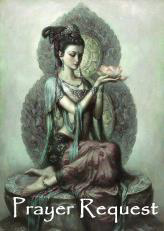
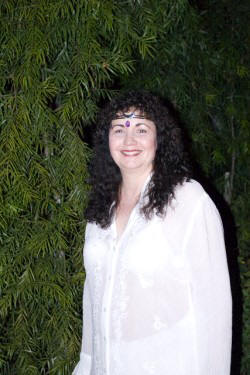 For almost two decades Rev. Xia has walked the path of the divine feminine, committed to her role as an inter-faith ambassador for the Pagan Community. Among her many articles, an essay entitled Paganism: Out of the Closet and into the Fire, originally written for her son’s school in Pasadena for a Diversity in Religion series, has been reprinted countless times. Additionally, she has written numerous mythological and ritual works centered around archetypal studies of the Goddess including Rites of Passage: A Goddess Ritual for Women, which aired on The Learning Channel–showing Pagan rites for Maiden, Mother, and Crone. She also produced and facilitated that segment for The Learning Channel. Additional articles include: Ritual and the Art of Alchemy, The Mythology of Nature, The Legacy of Creation Myths, The Myth of Matriarchy, and Secret Garden of the Feminine. She is completing a non-fiction book entitled, Feminine Alchemy: The Ritual Art of Cooking, a book of healing through Goddess archetypes which has been on the back burner for many years.
For almost two decades Rev. Xia has walked the path of the divine feminine, committed to her role as an inter-faith ambassador for the Pagan Community. Among her many articles, an essay entitled Paganism: Out of the Closet and into the Fire, originally written for her son’s school in Pasadena for a Diversity in Religion series, has been reprinted countless times. Additionally, she has written numerous mythological and ritual works centered around archetypal studies of the Goddess including Rites of Passage: A Goddess Ritual for Women, which aired on The Learning Channel–showing Pagan rites for Maiden, Mother, and Crone. She also produced and facilitated that segment for The Learning Channel. Additional articles include: Ritual and the Art of Alchemy, The Mythology of Nature, The Legacy of Creation Myths, The Myth of Matriarchy, and Secret Garden of the Feminine. She is completing a non-fiction book entitled, Feminine Alchemy: The Ritual Art of Cooking, a book of healing through Goddess archetypes which has been on the back burner for many years. My specific Priestess Path I wish to dedicate myself to is sacred circles. This means that my truest spiritual ecstasy comes from ritual in community with others. This is a large circle that includes not only planning and performing ritual, but also creating ritual art such as building altars, teaching ritual, making video…
My specific Priestess Path I wish to dedicate myself to is sacred circles. This means that my truest spiritual ecstasy comes from ritual in community with others. This is a large circle that includes not only planning and performing ritual, but also creating ritual art such as building altars, teaching ritual, making video…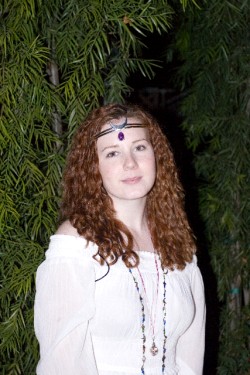 Marcella, our youngest priestess, has been a professional actor for many years. She is a graduate of the Los Angeles County High School for the Arts. Other training includes Viewpoints/Suzuki with Anthony Byrnes, Voice-Over Workshops with Sharon Mack, and the Royal Academy of Dramatic Arts in London, a Shakespeare Intensive. Her theater credits include The Cherry Orchard, A Midsummer Night’s Dream, and The Wizard of Oz. Her film credits include, Punch-Drunk Love, A Host of Trouble, and Kids in America. She has co-starred on various television shows, such as NCIS, Boston Legal, The O’Keefe’s, and Malcolm in the Middle. Awards encompass 1st Place in the 2005 and 2006 DTASC Shakespeare Competition / monologue, 1st Place 2005 RoleAbout / Cold Reading, 1st Place 2005 RoleAbout / Classical Monologue, and was the Silver Medalist ROP Outstanding Student in TV/Film.
Marcella, our youngest priestess, has been a professional actor for many years. She is a graduate of the Los Angeles County High School for the Arts. Other training includes Viewpoints/Suzuki with Anthony Byrnes, Voice-Over Workshops with Sharon Mack, and the Royal Academy of Dramatic Arts in London, a Shakespeare Intensive. Her theater credits include The Cherry Orchard, A Midsummer Night’s Dream, and The Wizard of Oz. Her film credits include, Punch-Drunk Love, A Host of Trouble, and Kids in America. She has co-starred on various television shows, such as NCIS, Boston Legal, The O’Keefe’s, and Malcolm in the Middle. Awards encompass 1st Place in the 2005 and 2006 DTASC Shakespeare Competition / monologue, 1st Place 2005 RoleAbout / Cold Reading, 1st Place 2005 RoleAbout / Classical Monologue, and was the Silver Medalist ROP Outstanding Student in TV/Film.
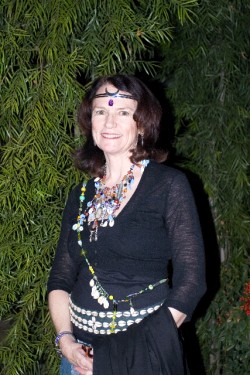 I have been following the path of the goddess for over 30 years. As an artist, I have always been interested in the mutual influence between the personal and political, private and communal, spiritual and artistic expression.
I have been following the path of the goddess for over 30 years. As an artist, I have always been interested in the mutual influence between the personal and political, private and communal, spiritual and artistic expression.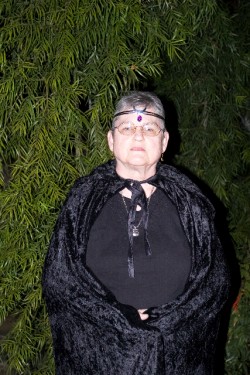 God was strictly male in the forties. And the males in my life were minor demi-gods to be obeyed without question. Father, priests, especially Monsignor, policemen, doctors–they protected me, taught me, molded me. My teachers (grade and high school) were Catholic nuns, but they were under the supervision and control of the priesthood.
God was strictly male in the forties. And the males in my life were minor demi-gods to be obeyed without question. Father, priests, especially Monsignor, policemen, doctors–they protected me, taught me, molded me. My teachers (grade and high school) were Catholic nuns, but they were under the supervision and control of the priesthood.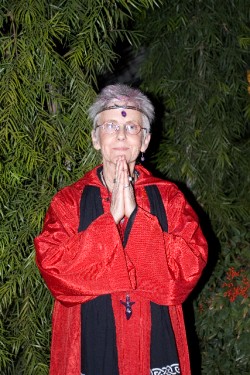 Introduction—the beginning February, 1986
Introduction—the beginning February, 1986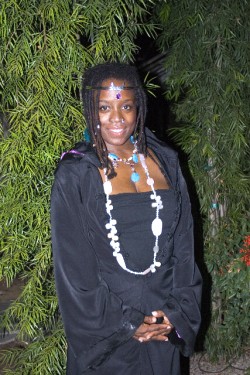 Haize Rosen has worked professionally as an actress, dancer and choreographer for 20 years. Haize is also an energy-light worker, certified in Thai massage and Hellerwork. To complement her work in the healing arts, Haize is a certified assistant mid-wife, and has a thriving doula practice. As a dancer, Haize has studied Balinese, The Orishas of both Africa and Brazil, and Classical Indian Dance in the style of Odissi. She has choreographed such renowned musicals as Guys and Dolls, Fiddler on the Roof, Little Shop of Horrors, and Grease. Haize recently wrote and starred in her one-woman shop, Country Colored Girl, which chronicled her family history in a small town in Alabama. She has studied ballet with Joy Finch, and acting at Lee Strausberg. Haize has worked rehabbing children at Juvenile Hall and taught theater and dance professionally in workshops throughout Los Angeles. The ordination onto her Priestess path in Temple of the Goddess is a culmination of her life’s work and provides an opportunity for Haize to apply her knowledge and skills in new and effective ways in the world.
Haize Rosen has worked professionally as an actress, dancer and choreographer for 20 years. Haize is also an energy-light worker, certified in Thai massage and Hellerwork. To complement her work in the healing arts, Haize is a certified assistant mid-wife, and has a thriving doula practice. As a dancer, Haize has studied Balinese, The Orishas of both Africa and Brazil, and Classical Indian Dance in the style of Odissi. She has choreographed such renowned musicals as Guys and Dolls, Fiddler on the Roof, Little Shop of Horrors, and Grease. Haize recently wrote and starred in her one-woman shop, Country Colored Girl, which chronicled her family history in a small town in Alabama. She has studied ballet with Joy Finch, and acting at Lee Strausberg. Haize has worked rehabbing children at Juvenile Hall and taught theater and dance professionally in workshops throughout Los Angeles. The ordination onto her Priestess path in Temple of the Goddess is a culmination of her life’s work and provides an opportunity for Haize to apply her knowledge and skills in new and effective ways in the world. 

